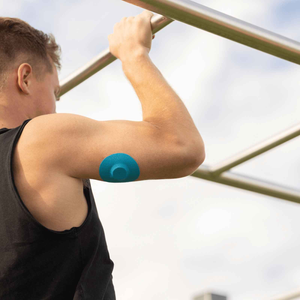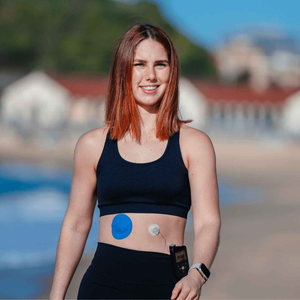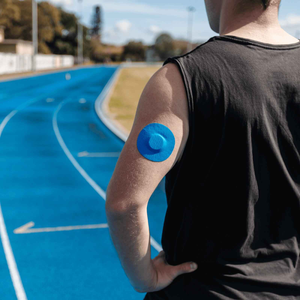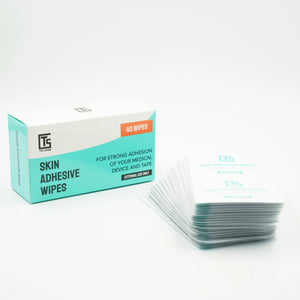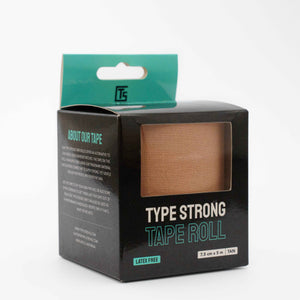Right, so here's the honest truth. Most CGMs - your Dexcom G7, Freestyle Libre, all that lot - they come with perfectly decent adhesive. It's not like they're designed to fall off after a sneeze. These things are meant to stick around for their full stint (usually 10 to 14 days, depending what you've got).
But here's where it gets interesting. Everyone's skin is completely different. Some people have skin that just doesn't play nice with anything sticky. Oily skin, sweaty skin, or just skin that seems to have a personal vendetta against medical devices.
Then there's the flip side - sensitive skin that gets all angry and red with standard adhesives. Been there? It's not fun. You might go months thinking you're sorted, then summer rolls around and suddenly your sensor's doing a runner every time you break a sweat. That's life for you.
Times When You Definitely Want a Patch
-
If You're Really Active Swimming, running, gym sessions, football - anything that gets you sweating loads. Your natural moisture becomes public enemy number one for sensor adhesion. A patch gives you that extra security when your body's trying its best to sabotage your tech.
-
Skin Gets Irritated Red, itchy, inflamed skin around your CGM? A hypoallergenic patch can work like a buffer between the original adhesive and your skin. Less irritation, better sticking power. Win-win.
-
Hot and Humid Where You Live Ever been to Darwin in the wet season? Or anywhere tropical? That humidity will test any adhesive to breaking point. Moisture protection patches can mean the difference between sensors lasting their full term or giving up halfway through.
-
You're a Fidgety Sleeper Toss and turn all night? Sleep on the side where your sensor lives? Yeah, you'll probably want some reinforcement. Nothing quite like waking up to find your CGM's made a break for it during the night.
When You Can Probably Give Patches a Miss
- Brand New to CGMs Honestly, try it without patches first. See how your skin reacts, how well the built-in adhesive copes with your day-to-day life. No point solving problems you don't actually have yet.
- Sensitive Skin Issues Sounds backwards, but sometimes more adhesive isn't the answer. If your skin's already struggling with the standard sticky stuff, adding another layer might make things worse, not better.
- Not Particularly Active If your biggest physical challenge is getting up to make a cuppa, and you live somewhere with reasonable weather, you might be absolutely fine with just the standard adhesive.

What Actually Works When You Need Backup
Alright, so you've decided you need some extra help. Here's what's actually worth your money:
- Dexcom Users The Dexcom G7 patches are spot-on for the newer model. For the older crowd, Dexcom G6 patches do the business. Both cut to fit each model properly.
- Freestyle Libre People Freestyle Libre patches are shaped for that round sensor design. Come in different patterns too, if you fancy something a bit more interesting than boring medical tape.
- Medtronic Crowd Medtronic Guardian patches handle that particular system's shape. Work with infusion sets as well if you're running a pump.
- Omnipod Users Omnipod patches are made for those pod systems that sometimes need extra staying power.
- DIY Route The tape roll lets you cut whatever size you need for any device. Bit more mucking about, but perfect if you want custom coverage.
Working Out What You Actually Need
Here's how to figure it out without overthinking it:
- Keep It Simple to Start - Use your CGM exactly as it comes for the first few sensors. Make a mental note of when and why it comes unstuck (if it does at all).
- Think About Your Life - Sweaty gym sessions? Humid climate? Skin that gets grumpy easily? These things matter way more than which brand everyone else is using.
- Try Different Things - What works brilliantly for your mate might be completely useless for you. Everyone's different.
- Don't Stress About It - A patch costs less than a decent coffee. If you're unsure, just get one and see what happens.
Straight Talk
Look, patches aren't a magical solution. They won't rescue a sensor that's already peeling off, and they won't make a badly placed CGM suddenly comfortable. But when you actually need them? They're absolute lifesavers.
Some people will stress for ages about whether they need patches, then discover their CGM sticks perfectly well without any help. Others will lose sensor after sensor before finally admitting they need backup.
Bottom line - your CGM only works when it's actually stuck to you and functioning. If patches help with that, brilliant. If they don't, spend your money on something else instead.
"Research shows that proper sensor adhesion significantly impacts glucose monitoring accuracy and user satisfaction" - Juvenile Diabetes Research Foundation.
Thinking about giving patches a go? Have a look at our CGM comparison guide to make sure you're getting the right protection for whatever device you're using. Because honestly, the best CGM patch is whichever one keeps your sensor exactly where it needs to be.
